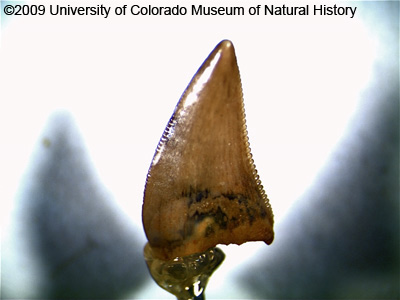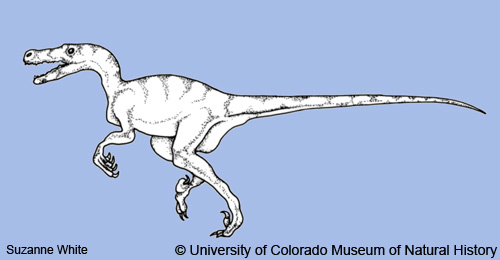

Ricardoestesia iscocelese was a medium-sized theropod dinosaur of the late Cretaceous (65 million years ago) that weighed about 220 pounds (100 kilograms). It is known primarily from isolated teeth like this one, which are extremely common in the Lance Formation of Wyoming. A pair of lower jawbones found in Canada are slender and long, and with the small, finely serrated teeth, they suggest that Ricardoestesia may have eaten fish.
Very little is known of Ricardoestesia, but what little paleontologists do know is largely based on microfossils like this tooth. Even the smallest fossils can provide important information.

The Lance Formation has produced many important fossils, ranging from tiny microfossils like those collected by harvester ants to fully articulated dinosaur skeletons. It was deposited by streams on a coastal plain stretching along the shallow interior sea of the Western Interior Seaway, which cut North America in half. Dinosaurs, reptiles, fish, amphibians, birds, and small mammals lived in a wet subtropical climate very different from today's dry seasonal climate.
Learn more about the Lance Formation with Passport-In-Time Microvertebrate Fossil Project at the University of Wyoming Geological Museum: Late Cretaceous Paleontological Resources in the Public Eye.